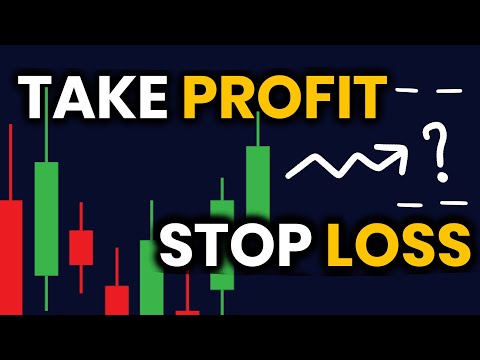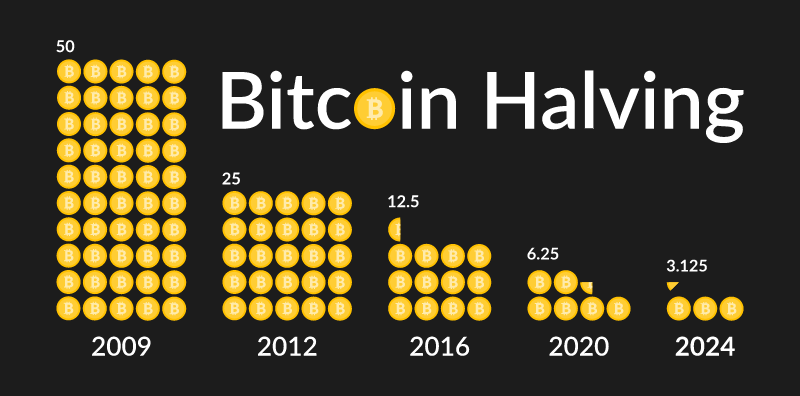Using Stop-Loss and Take-Profit in Crypto Trading: Complete Details
Stop-loss and take-profit orders are essential tools for risk management in cryptocurrency trading. Both are used to automate the process of buying and selling at predetermined price points, which helps traders minimize potential losses and lock in profits. These tools are especially important in the volatile world of cryptocurrency, where price swings can be drastic and rapid.
In this article, we will explore the concepts of stop-loss and take-profit, how they work, and how to use them effectively in crypto trading.
What is a Stop-Loss Order?
A stop-loss order is an instruction to sell a cryptocurrency automatically when its price falls to a specific level. The primary purpose of a stop-loss order is to limit a trader’s losses in case the market moves against their position.
For example, if you buy Bitcoin at $40,000 and set a stop-loss at $37,000, the stop-loss order will trigger and sell your Bitcoin automatically if the price drops to or below $37,000. This helps protect you from further losses if the market continues to decline.
How Stop-Loss Orders Work
- Limit Losses: Stop-loss orders are used to avoid catastrophic losses when the market moves in the wrong direction.
- Automation: Once a stop-loss order is placed, you don’t have to monitor the market constantly. The order will be triggered automatically when the price reaches the set level.
- Types of Stop-Loss Orders:
- Standard Stop-Loss: This is the most basic form, where the order triggers a market sell at the best available price when the price hits the stop-loss level.
- Trailing Stop-Loss: This is a more advanced version, which automatically adjusts the stop-loss level in response to favorable market movements. For example, if Bitcoin rises from $40,000 to $42,000, a trailing stop-loss set at a $1,000 distance would adjust to $41,000, protecting gains as the market moves up.
Advantages of Stop-Loss Orders
- Risk Management: Stop-loss orders help traders manage risk by limiting potential losses to a predetermined amount.
- Peace of Mind: Traders don’t need to monitor the market all the time because stop-loss orders will trigger automatically when the price reaches a certain threshold.
- Emotional Control: Stop-loss orders take the emotion out of trading decisions. They allow traders to stick to their strategy without being influenced by market panic.
Risks of Stop-Loss Orders
- Slippage: In volatile markets, a stop-loss may not be executed at the exact price set. This is known as slippage, and it can lead to more significant losses if the market moves quickly.
- Overuse: Setting stop-loss orders too tightly (e.g., placing them too close to the entry point) can result in getting stopped out prematurely, even if the market is just experiencing minor fluctuations.
- Market Gaps: In extremely volatile markets or during news events, prices may gap over the stop-loss level, meaning the stop-loss order may not be executed until the price has moved further away from the original stop-loss point.
What is a Take-Profit Order?
A take-profit order is an instruction to sell a cryptocurrency automatically when its price reaches a certain level of profit. The purpose of a take-profit order is to lock in profits at a predetermined price before the market reverses and the price starts to decline.
For example, if you buy Ethereum at $2,000 and set a take-profit at $2,500, the take-profit order will trigger and sell your Ethereum automatically when the price hits or exceeds $2,500. This allows you to lock in profits without waiting for the market to move back down.
How Take-Profit Orders Work
- Locking in Profits: The take-profit order helps traders lock in profits at a specified price level. When the market hits the target price, the order is executed automatically.
- Automatic Execution: Like a stop-loss order, once a take-profit order is set, the trade will be executed automatically when the market hits the target.
- Types of Take-Profit Orders:
- Limit Take-Profit: This is a standard take-profit order where the cryptocurrency is sold at a predefined price. Once the price reaches that level, the order is executed.
- Trailing Take-Profit: Similar to a trailing stop-loss, a trailing take-profit allows the target price to follow the price movement as the market moves in favor of the trade. This helps capture additional gains if the price continues to rise.
Advantages of Take-Profit Orders
- Ensures Profit: Take-profit orders ensure that you can lock in profits without having to monitor the market constantly.
- Avoids Greed: Traders sometimes allow greed to influence their decisions, holding on to a position too long and eventually losing profits. Take-profit orders prevent this by securing gains automatically.
- Time Efficiency: By setting take-profit orders, you can spend less time actively monitoring the market.
Risks of Take-Profit Orders
- Premature Exit: If the price reaches your take-profit level, but the trend continues in your favor, you may miss out on additional gains. Take-profit orders can sometimes force you to exit a trade too early.
- Market Reversal: Prices may briefly touch your take-profit level and then reverse. In highly volatile markets, this can lead to missed profits if the price moves in the opposite direction shortly after your order is triggered.
- Slippage: As with stop-loss orders, slippage can occur, especially in volatile markets. Your take-profit order might be executed at a price different from the target.
How to Use Stop-Loss and Take-Profit Together
Using stop-loss and take-profit orders together can significantly improve your risk management strategy. When combined, they provide a structured way to enter and exit trades without the need for constant market observation.
Example Strategy:
- Buy Bitcoin: You purchase Bitcoin at $40,000.
- Set a Stop-Loss: You set a stop-loss at $37,000 to limit potential losses. This means that if Bitcoin’s price drops to $37,000, your position will automatically be sold, limiting your loss to $3,000.
- Set a Take-Profit: You set a take-profit at $45,000. This means if the price rises to $45,000, your position will be automatically sold, locking in a profit of $5,000.
By combining both orders, you are effectively creating a safety net. If the price goes up, you can lock in profits, and if the price drops, your losses are limited.
Best Practices for Using Stop-Loss and Take-Profit in Crypto Trading
- Set Realistic Levels: Avoid setting stop-loss or take-profit orders too close to your entry point. In volatile markets, small price fluctuations could trigger them unnecessarily.
- Consider Market Conditions: Assess market conditions before setting orders. In highly volatile markets, a wider stop-loss might be necessary to avoid being stopped out prematurely.
- Use Trailing Stop-Loss/Take-Profit: Consider using trailing stop-loss or take-profit orders to allow more flexibility in capturing profits as the market moves in your favor.
- Avoid Overtrading: Setting too many stop-loss or take-profit orders can result in overtrading. Stick to a plan and avoid reacting impulsively to short-term price movements.
Conclusion
Stop-loss and take-profit orders are essential tools for managing risk and maximizing profits in crypto trading. By using them effectively, traders can automate their trading strategy, protect their investments, and avoid emotional decision-making. However, like any tool, they must be used carefully, taking into account market conditions, volatility, and the specific trading strategy.
By understanding the functionality of stop-loss and take-profit orders and using them in conjunction, crypto traders can protect their capital and improve their chances of success in the volatile cryptocurrency market.




